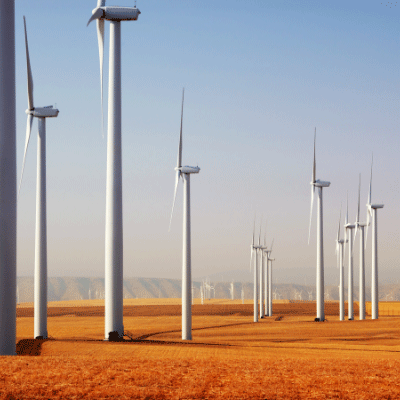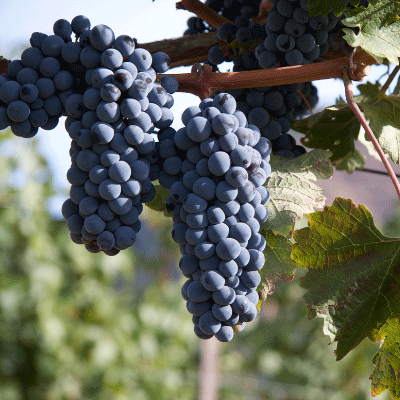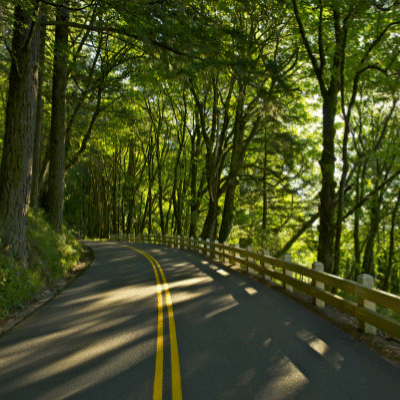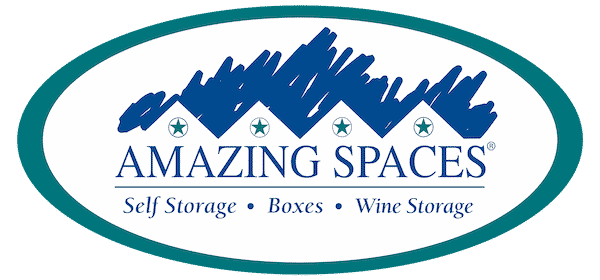Amazing Moving to Oregon Guide: Discover the Beaver State
We created this guide for moving to Oregon to help those who are in their very early stages of researching where they’d like to move. So, what exactly do you need to know before moving to Oregon? We’ve complied some of the most important items you should consider when making this big decision. According to 2020 Census data, Oregon was close to joining the top ten fastest growing states of the last decade, with a massive 10.6% growth in population. So, is Oregon the right state for you to move?
What You Need to Know about Oregon’s Geography

Oregon is a Pacific Northwest state with the Columbia River delineating much of its northern boundary with Washington state, and the Snake River delineating much of its eastern boundary with Idaho. Fun fact: the 42nd north parallel delineates the state’s southern boundary with California and Nevada.
If you love exploring the outdoors, Oregon may be the right place for you. In fact, with an area of 98,381 square miles, Oregon is one of the most geographically diverse states in the U.S.
It has volcanoes, abundant bodies of water, dense evergreen and mixed forests, as well as high deserts and semi-arid shrublands. Oregon is only slightly larger than the United Kingdom and it even lies within two time zones!
From Crater Lake, famous for its deep blue color and clarity, to the D River, one of the two shortest rivers in the world, and not to forget the Oregon Badlands Wilderness, you’re sure to be inspired by Oregon’s natural beauty. The variety in the typography is just one of the many things to love about Oregon.
Oregon’s highest point is Mount Hood, a stratovolcano, standing at 11,249 ft tall. By comparison, Oregon’s lowest point is in the Pacific Ocean, and that’s 0 ft! Speaking of low points, Crater Lake National Park is home to the deepest lake in the U.S.!
Moving to Oregon Guide on the Weather in Oregon

Oregon’s generally mild climate varies widely depending on where in the state you go. It may surprise you to learn that there is significant variation given the variety of landscapes across the state. In western Oregon, the state has an oceanic climate heavily influenced by the Pacific Ocean. It is very wet in the winter, moderately wet to very wet in the spring and fall, and then dry during the summer.
In contrast, eastern Oregon typically sees low humidity year-round given that it’s largely comprised of high desert. That means eastern Oregon has cold, snowy winters and very dry summers. The state’s southwestern portion has a Mediterranean climate, similar to Northern California, with drier and sunnier winters and hotter summers. This just means monthly normal high and low temperatures really depend on where in the state you live. Be sure to consider this carefully before moving to Oregon!
The state has some dangers associated with nature such as landslides, earthquakes, or wildfires, which should all considered if you plan to build a home.
Moving to Oregon Guide on Getting a Job in the Beaver State

If you’re looking for a place to grow your career, consider moving to Oregon! According to an article published by the State of Oregon Employment Department, at the time of writing this article, the state of Oregon has seen a steady job growth rate compared to the rest of the United States. Moreover, in 2021, Oregon employers added jobs faster than expected coming out of 2020!
Oregon employers continues to add more jobs, resulting in a steady unemployment rate of around 4.9%. Industries showing solid job gains included agriculture (including fishing and forestry), tourism, and manufacturing. Definitely a perk to consider when deciding if moving to Oregon is right for you!
What’s the situation on buying alcohol in Oregon?

Who isn’t curious about how to toast moving to a new state! Oregon law permits the sale of alcohol for on- or off-premises consumption, and retailers may sell beer, wine, or spirits between 7 a.m. and 2:30 a.m. every day. Of course, it is still illegal to sell alcohol to anyone under twenty-one, and an offense can led to imprisonment or a hefty fine.
Interestingly, the Willamette Valley, in the area stretching about 150-miles south of Portland, is celebrated for its more than six hundred wineries! In fact, Portland has the largest number of breweries of any city in the world! Now that’s something to celebrate after moving to Oregon!
Fun fact: Oregon law allows alcohol sellers to confiscate false IDs and retailers may sue anyone who uses a false ID to buy alcohol!
What is there to do in Oregon?

Hopefully you like hiking and camping! Oregon’s nickname, the Beaver State, references Oregon’s state animal and a historically important part of the Oregon fur trade, but also references the state’s impressive nature. (Don’t worry, the state’s economy has moved past trading beaver pelts these days!) There are over one hundred state parks in Oregon, including Cascadia State Park and Tumalo State Park, that will make every weekend an adventure! Looking for something a little wild? There are also multiple national wildlife refuges and wilderness and national forests that might pique your interest, too!
Another choice is to head over to Portland for culture, food, and fun. A big city, Portland boasts a variety of fun and interesting things to do including the Portland Art Museum and the Oregon Zoo. However, if you’re like us, we’re sure you’ll agree that outdoor Oregon is the best. You’ll be in awe each and every time you step outside after moving to Oregon!
Important State Symbols in Oregon

The state of Oregon has thirty-five official state symbols; we’ve included a few of our favorites here. The first, and most important, is the state animal – the beaver! In fact, while Oregon was being settled, the fur trade was an economic staple. While beavers are no longer economically important, they create important habitats for fish and other wildlife and are common throughout Oregon’s waterways and riparian areas.
The state fruit is the pear, and the flower is the Oregon Grape. Another one of our favorite Oregon symbols is the state animal: the Beaver. Probably the most unexpected state symbol is the state mother – Tabitha Moffatt Brown!
Lesser-Known FAQs About Moving to Oregon
Q: What is the capital of Oregon?
A: The capital of Oregon is Salem. Salem is also the second most populated city in Oregon after Portland, which is about an hour away. The Salem metropolitan statistical area, an area that covers Marion and Polk counties, includes a combined population of over 400,000. If you plan to move to Oregon, you’ll probably find yourself here or in Portland!
Q: How do Oregon’s public schools rank nationally?
A: According to a study by US News, Oregon public high schools rank 33/50 in a national breakdown tracking state-by-state high school performance. While education quality can vary widely depending on where in the state you live, this report takes the weighted average of the state’s high school performance into consideration.
Q: What kind of taxes can you expect to pay in Oregon?
A: Oregon’s taxable income is closely connected to federal taxable income. The state personal income tax rates range from 4.75% to 9.9% of taxable income, but Oregon is one of only five states in the nation that levies no sales or use tax. Since Oregon does not have a sales tax, the state government’s primary source of revenue is that income tax. The state also does not collect a motor vehicle excise tax, a business and occupations tax, or direct levies on intangible property such as stocks, bonds, or securities.
The state’s property tax applies to privately owned real estate such as land, homes, farms, stores, factories, warehouses and commercial offices. Personal property, held for the use and enjoyment of individuals, is exempt from taxation. However, personal property such as machinery, equipment, and supplies used to produce income, or with the potential of producing income, is subject to taxation.
Q: What’s it like to vote in Oregon?
A: Registering to vote in Oregon is quick and easy. You can register online or by mail using a voter registration form found on the Oregon Secretary of State’s website. You can also register in person at the county elections office. The deadline to register is twenty-one days before Election Day, and in order to register, you must be a U.S. citizen, an Oregon resident, and at least sixteen years old. Online registration requires a current Oregon driver’s license or state ID card.
Q: What are the rules for switching your driver’s license after moving to Oregon?
A: If you have an out-of-state driver’s license, you’ll need to transfer it for an Oregon license within 30 days of establishing your residency and you plan to keep driving in the state. If you already have a valid out-of-state license, you will have to visit a Department of Motor Vehicles (DMV) office in person, bringing the necessary documentation with you, and pass a vision and knowledge test. All the required paperwork and a list of the approved forms of ID are found on the state’s DMV website for your convenience.
Q: When do you need to update your car plates after moving to Oregon?
A: If you are a new Oregon resident, you must register your vehicle with the Division of Motor Vehicles (DMV) after establishing Oregon residency. You must title the car before registering. You can register after titling on the same visit. You will also need to complete a Certificate of Compliance for passing an emissions test. All this information can be found on the state’s DMV website along with links to the required forms and applications!
Q: What’s it like driving in Oregon?
A: Like most state, the driving conditions in Oregon are very different in urban and rural areas. Thankfully, Oregon, in a tie with its eastern neighbor Idaho, ranked at number 27 as the state with the worst drivers in America. Now, that doesn’t mean Oregon drivers are perfect – there’s just too much to look at out the window of the car!
Q: Does Oregon have any walkable cities?
A: Of all cities in Oregon, the best bet for having a walkable lifestyle is going to be in Portland, which is actually the thirteenth most walkable large city in the U.S.! The city has multiple well-developed public transportation options, and the city is quite bikeable. Portland is one of the most bicycle-friendly cities in the world!
Is Oregon the Right State for You to Move?

For those of you looking for outdoor adventure, while still enjoying the creature comforts of city living, Oregon (and specifically the Willamette Valley) may be the right fit for you. The beautiful typography of Oregon, low taxes, and booming economy all lend themselves into making life great in the Beaver State. However, natural disasters like wildfires and earthquakes and middle of the pack schools prove that while exceptional, Oregon isn’t perfect.



